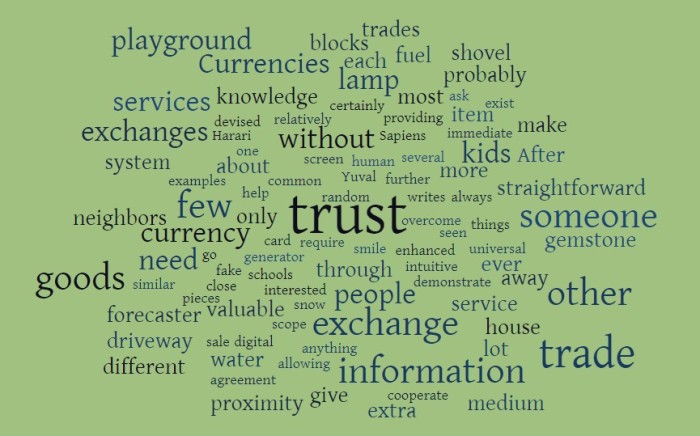Growing up, I was much more interested in the design and appearance of money than I am today. I remember being fascinated by the faces on paper bills and coins, by the small printing details and hidden items present on currency, and by the small details that contained important information within serial numbers or other markings. Today, as we get further into a digital world and use less physical currency, I hardly think about these factors, but for much of human history, these physical markings and the signals they contain have been incredibly important and worthy of the awe my younger self felt toward them.
In his book Sapiens, Yuval Noah Harari spends some time examining currencies as a medium of exchange and discusses the crucial role that state sponsored currencies played in the growth and development of human economies and human trust. Currencies created a medium of exchange and money became a great tool to build trust between individuals who had never met, were not family, and otherwise had no reason to trust each other. Currencies helped hold the social world of humans together, and counterfeiting currencies quickly became one of the most serious crimes. Harari writes, “counterfeiting is not just cheating – it’s a breach of sovereignty, an act of subversion against the power, privileges, and person of the king.”
Ancient currencies tended to feature the likeness or symbol of a powerful ruler. Their images and depictions had tremendous signaling potential, and special, hard to copy markings, helped uphold that signaling potential. Harari explains that a coin stamped with the face or emblem of a ruler was a guarantee based on the honor, power, and authority of that ruler that the coin contained the amount of precious metal that was indicated by the coin – contrasting unmarked ingots or in-kind goods that could be subtly adjusted and manipulated to create unfair trades. Counterfeiting was an act directly against the ruler, their social order, and the trust that a population would have in that ruler.
The signaling potential of currencies has carried forward to the modern day. American quarters feature a wide variety of state-specific designs on the back, intended to promote the authority, Americanness, and prestige of each state and the notable landmarks in the country. Paper bills feature the faces of presidents and founding fathers (and one day a woman will be added). These currencies still signal the history and authority of the United States. Difficult to copy markings and printing techniques still give us confidence that the currency is authentic. The paper and the coins we may still occasionally use are backed by the authority and trust of American governance, even if that authority and trust is no longer tied to a single king or ruler. Many of the same features of ancient currencies are still at play in our modern money. The signaling role of currency is still central to it’s use, as is the trust it generates.

